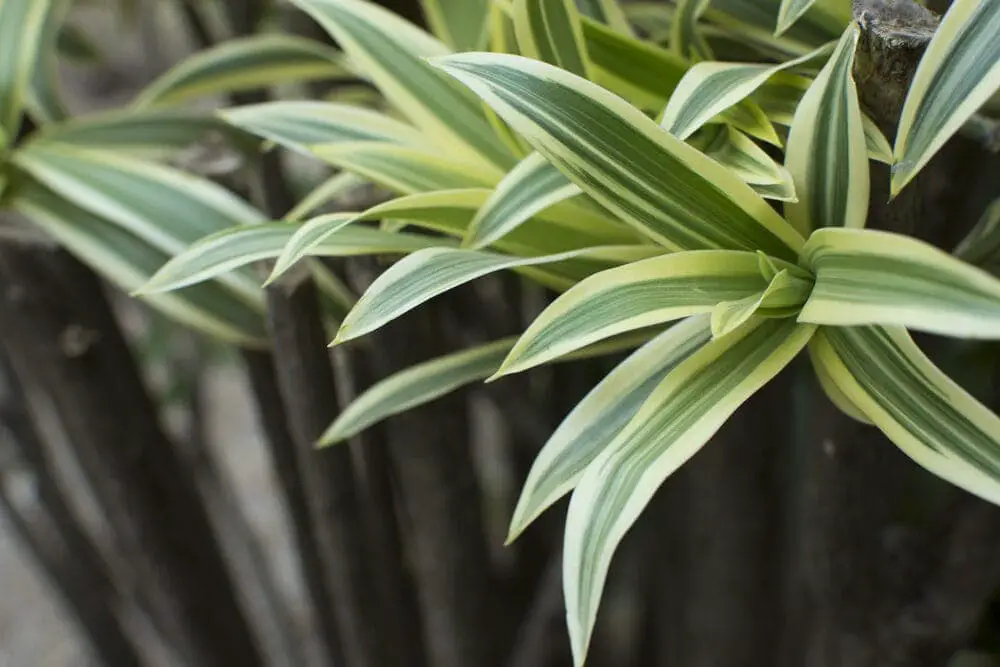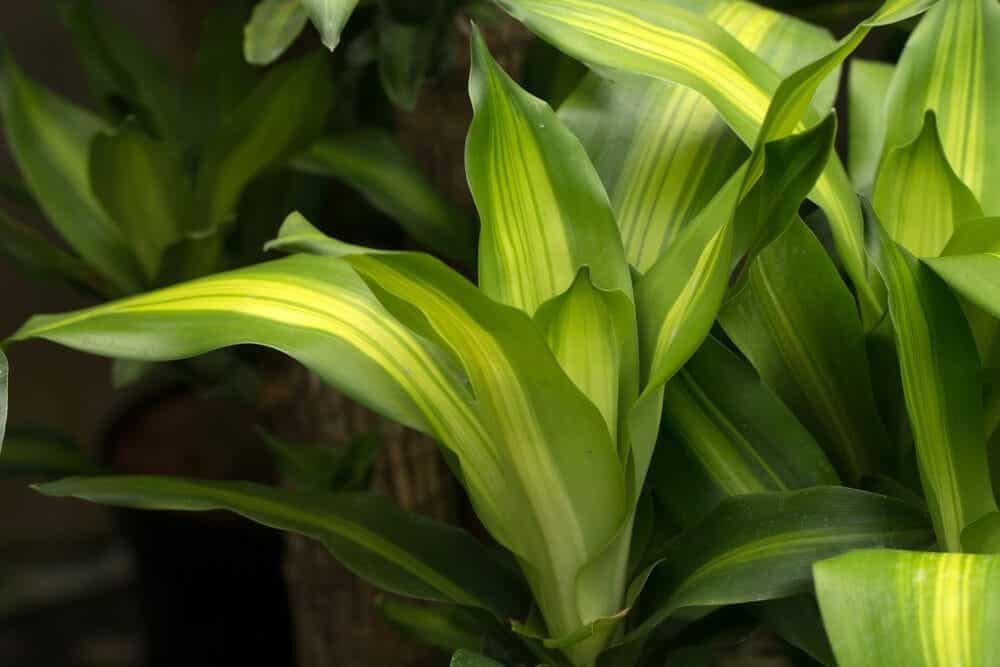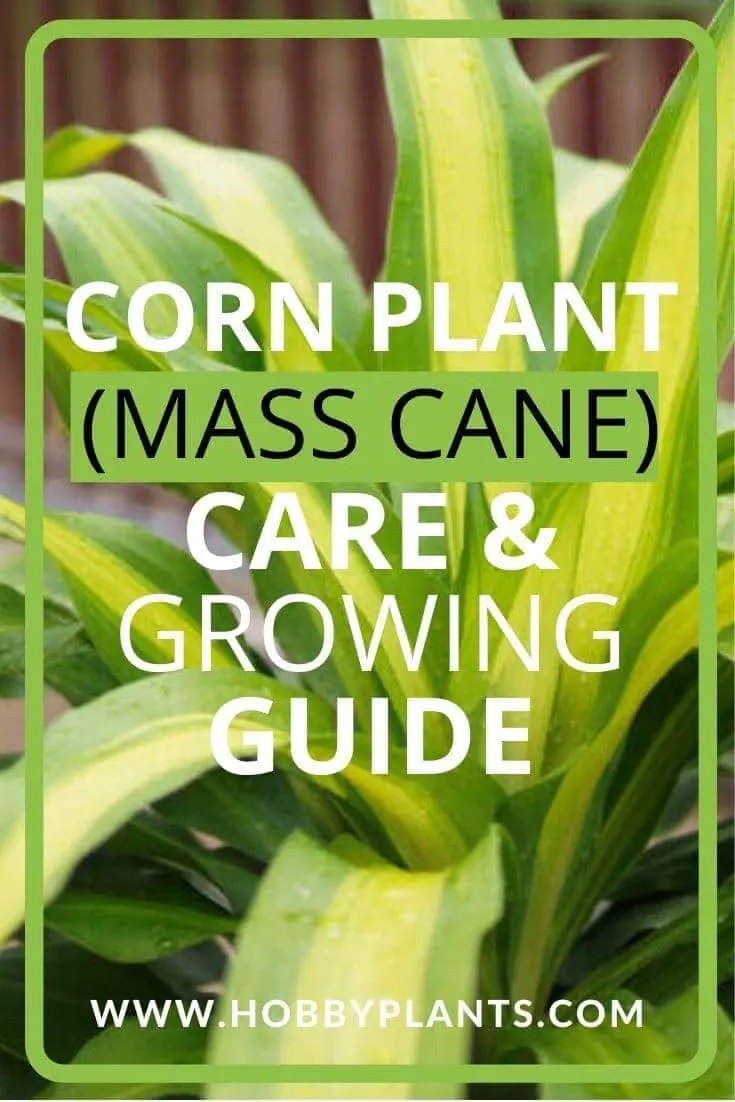Corn plants are excellent for beginners because of how incredibly easy they are to care for.
These make for great houseplants, and they can really improve the overall flow of your home’s interior.
We will take a close look at everything you need to know about growing this plant and taking care of it.
Corn Plant Care & Growing Guide
1. Light Requirement
You need to keep this plant away from direct sunlight, as it can do a lot of damage within a fairly short amount of time. If you keep your plant inside in front of a western-facing window, it should have curtains or blinds to filter the light.
The fact is that these plants don’t do very well when they are bombarded with bright sunlight throughout the day. While these plants can survive in low light environments, their coloration usually becomes duller.
It is best to provide your corn plant with a moderate amount of light each day. If you are going to keep it outside, make sure that it is in a nice shady area.
2. Water
When it comes to watering your corn plant, it is important that you thoroughly soak the soil. You don’t want to water it again until the soil has become fairly dry, but not bone dry. This can be a little tricky at first, but it won’t take long for you to get the hang of it.
Watering these plants too much or too often can quickly lead to root rot, which can cause irreversible damage. If the soil still feeling fairly moist, you’ll want to wait a bit longer before watering it again. This is a crucial part of maintaining these plants, so you’ll need to keep it in mind.
3. Climate
These plants can be grown in plant hardiness zones 10 through 11. They thrive in moderate climates that are not too hot or cold.
4. Soil
You should keep your corn plant in soil that is moderately dry and drains well. Nutrient-rich organic potting soil is best for these plants. While this soil can be quite expensive, it is definitely worth it overall.

5. Temperature
Corn plants tend to do best in a temperature range of 60 to 75 degrees Fahrenheit. You definitely don’t want to expose this plant to temperatures below 55 degrees Fahrenheit, as the cold can cause serious damage.
Temperatures higher than 75 degrees Fahrenheit can burn the leaves, which also isn’t good. If the weather starts getting very hot, you can turn the leaves so they are facing away from the sun. This should help with minimizing damage to the leaves.
6. Repotting
When you are ready to repot this plant, you’ll first need to take out all of the soil and gently remove the plant from its container into a bigger one. You need to be careful not to harm the roots at all while you are doing this.
The next step in this process is to fill up the container around the plant with the appropriate soil. You don’t want to pack it in too tightly, as it needs to be able to drain the water efficiently. Tightly packed soil can encourage root rot with your plant, which is the last thing you want.
7. Speed of Growth
Corn plant grows at a moderately fast speed, but much less so when it is kept in a low light environment. You can significantly speed up the growth of this plant by simply providing it with a healthy amount of natural sunlight throughout each day.
8. Height and Spread
These plants can grow up to 180 inches tall with a maximum spread of 48 inches. You will therefore have to carefully choose a spot where it will have room to grow out.
9. Flowers
The flowers that this corn plant produces are very potent with a sweet fragrance that you’ll likely find very pleasing. They are usually pure white and form in clusters. It is pretty uncommon for this plant to produce flowers though.
10. Trimming
If you notice any damage to your corn plant’s leaves due to excess cold or sun exposure, you should trim them. It is, however, important for you to let the plant full recover before going ahead and doing this.

Is the Corn Plant Poisonous?
The corn plant poses no threat to humans, but it is considered to be very toxic to other animals like cats and dogs.
Can Corn Plants Grow in Water?
You cannot grow corn plants in water, as they need to be kept in damp soil.
How to get Corn Plants to Flower
It is remarkably difficult to get corn plants to flower. If you really want to do this, you’ll have to keep it in a greenhouse under very strict conditions that are heavily monitored.
Common Corn Plant Diseases
Corn plants can have major problems with mealybugs, which are fairly common pests that can do a lot of damage.
These plants can also form brown spots on the leaves, which usually happens when it outgrows its container. This is why it is so important that you keep checking the root system to see if it is time to repot.
Conclusion
- Corn plants should be kept out of direct sunlight. If you keep on of these plants inside near a western-facing window, it should have curtains or blinds.
- You should thoroughly soak the soil of this plant each time you water it.
- Make sure that the soil is fairly dry before watering it again.
- These plants can thrive in hardiness zones 10 through 11.
- It is best to keep corn plants in an environment of 60 to 75 degrees Fahrenheit.
- If the weather outside gets very hot, you should turn the leaves away from the sun to minimize damage.
- When repotting these plants, be very careful not to damage the root system.
- You can expect your corn plant to grow fairly quickly. Keeping it in a low light environment will slow down its growth rate.
- These plants rarely flower, and you pretty much need to keep them in a greenhouse for this to happen.

Victoria is the owner and main author of hobby plants. She loves spending her free time in her garden planting and taking care of her plants. Victoria hopes you enjoy the content here!
![Yucca Cane Plant Care: [Complete Beginner's Guide] Yucca Cane Plant Care: [Complete Beginner's Guide]](https://www.hobbyplants.com/wp-content/uploads/2022/09/yucca-cane-plant-care-300x158.jpg)
![Mother Of Thousands Plant [Complete Plant Care Guide] Mother Of Thousands Plant [Complete Plant Care Guide]](https://www.hobbyplants.com/wp-content/uploads/2022/07/mother-of-thousands-plant-300x158.jpg)
![Majesty Palm Plant Care: [Complete Beginner's Guide] Majesty Palm Plant Care: [Complete Beginner's Guide]](https://www.hobbyplants.com/wp-content/uploads/2022/08/majesty-palm-care-300x158.jpg)
![Exotic Angel Plant Care: [Complete Beginner's Guide] Exotic Angel Plant Care: [Complete Beginner's Guide]](https://www.hobbyplants.com/wp-content/uploads/2022/08/exotic-angel-plant-care-300x158.jpg)
![Snow White Waffle Plant: [Complete Care Guide] Snow White Waffle Plant: [Complete Care Guide]](https://www.hobbyplants.com/wp-content/uploads/2022/08/snow-white-waffle-plant-300x158.jpg)
![Waffle Plant Care: [Complete Beginner's Guide] Waffle Plant Care: [Complete Beginner's Guide]](https://www.hobbyplants.com/wp-content/uploads/2022/08/waffle-plant-300x158.jpg)
![Bird Of Paradise Plant Care: [Complete Beginner's Guide] Bird Of Paradise Plant Care: [Complete Beginner's Guide]](https://www.hobbyplants.com/wp-content/uploads/2022/08/bird-of-paradise-plant-300x158.jpg)
![Purple Passion Plant Care: [Complete Beginner's Guide] Purple Passion Plant Care: [Complete Beginner's Guide]](https://www.hobbyplants.com/wp-content/uploads/2022/08/purple-passion-plant-care-300x158.jpg)
![China Doll Plant Care: [Complete Beginner's Guide] China Doll Plant Care: [Complete Beginner's Guide]](https://www.hobbyplants.com/wp-content/uploads/2022/09/china-doll-plant-care-300x158.jpg)
![Polka Dot Plant Care: [Complete Beginner's Guide] Polka Dot Plant Care: [Complete Beginner's Guide]](https://www.hobbyplants.com/wp-content/uploads/2022/09/polka-dot-plant-300x158.jpg)
![Mona Lisa Lipstick Plant Care: [Complete Beginner's Guide] Mona Lisa Lipstick Plant Care: [Complete Beginner's Guide]](https://www.hobbyplants.com/wp-content/uploads/2022/09/lipstick-plant-mona-lisa-300x158.jpg)
![Bush On Fire Croton Plant Care: [Complete Beginner's Guide] Bush On Fire Croton Plant Care: [Complete Beginner's Guide]](https://www.hobbyplants.com/wp-content/uploads/2022/09/bush-on-fire-croton-300x158.jpg)